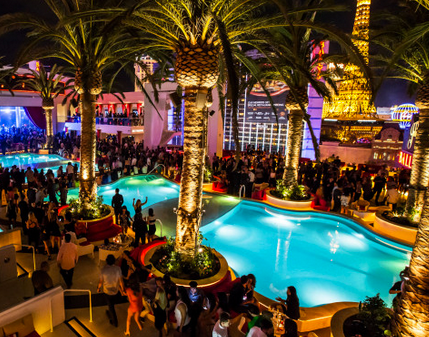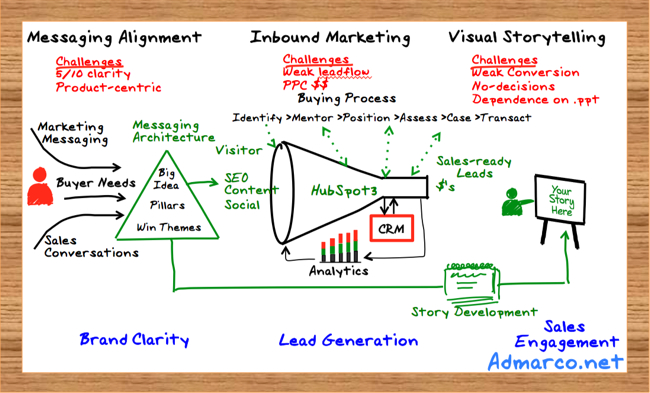I've only got a couple of minutes
If you are in B2B technology sales on a trade-show floor, you have 20 seconds to greet a passing visitor, figure out if they have potential and engage them in discussion. The main goal of the trade-show is to have conversations that turn into leads and sales, not to give away coffee mugs or tee-shirts....both can be measured, but only one will turn into revenue.
No time for a Presentation
It's amusing to watch salespeople at Tradeshows drag visitors off the floor and back to the booth to give them the 5 minute introductory pitch. I've done it in the distant past and I've created the crisp introductory slide-deck and I can't help thinking of wild animals dragging prey back to their lair to devour them.
Scott Santucci, principal analyst at Forrester Research stated in a recent survey, that “88 percent of executive-level buyers believe it’s important that a sales pitch is framed as a conversation, as opposed to a prepared PowerPoint presentation.” Buyers want effective conversations with intelligent salespeople at Trade-shows, not presentations.
Rule: No presentations at trade-shows, focus on conversations.
If you have a great demo and the product capabilities are enhanced by viewing it on screen then OK, by all means give a demo.
Give me the Big Picture
At a trade-show, you are in a less ideal environment for verbal communication; amplified presentations, music, PA announcements, and nearby conversations, make it challenging to be heard and to clearly understand what the visitor is saying. For that reason I recommend using big-pictures and stories to engage visitors.
Visual Confections
Visual confections are big picture stories - a single image superset of information that include images, text, numbers and an overarching storyline that can quickly help buyers get your big picture and enable them to focus on their areas of interest.
A
visual confection is basically a completed whiteboard story and if you are using one at a tradeshow, it should be broad, but specific enough to allow visitors to readily identify with their challenge areas. The goal is to engage visitors in conversation, uncover their concerns, have your capabilities unfold in the course of conversation, qualify interest and get a meeting.
Visual Confections are Differentiators
Here is a reproduction of the whiteboard visual confection I used in our inbound marketing partner,
Kuno Creative's booth at the recent
#Inbound12 conference in Boston. It stood out in front of the booth, no dragging people off the floor, I pitched them where they stood and plenty of people were curious to know what it was. Total investment $64.00 for 3*2 whiteboard, tripod stand, 4 color dry erase marker set.
Visual Confection Trade-Show Best Practices
- Use a whiteboard or paper version of your story already laid out....don't attempt to whiteboard in real time at a tradeshow, there simply isn't time.
- Triage visitors who come thick and fast in the breaks. Be ready to politely send those looking for a stamp or tee-shirt on their way to the next booth. If you take junk to give-away at your booth, you will have plenty of visitors who want it and lots of noise, - is that what you really want?
- Engage visitors with a brief story and establish their role and their interest area...then ask the following question, "what's the biggest problem you are having with....."
- If you haven't engaged the visitor and they are not forthcoming with an interest area, then why pitch them? Give them a hand-out and politely send them on their way, or ask them to wait till a few more people show up that are interested and then tell your whiteboard story.
- Start your story with your "why I'm here story" that introduces the big picture. Whiteboard storytelling is an opportunity to have the visitor interact with the content and you, the presenter....you don't have to start at the start or finish the whiteboard.
- Go as deep as you need depending on the level of engagement, but you will only have 5 minutes at best, as others will likely show up half-way through.
- Check for interest and understanding, ask questions, does this make sense?, would it work for you?
- If interested, they will tell you, or if the conversation is lively and there is genuine interest, you could ask, "would it be OK if I contacted you after the event to continue our discussion", or if they are interested, but not the right person, ask "would you mind if I followed up after the show and if you could connect me with the right person in the organization?" This may sound obvious, but getting permission to contact them is important.
- Write brief notes on the back of the card that will help you remember them - red hair, loud voice, 50 salespeople, has a problem here....this is very important for follow-up.
- I like Mike Bosworth's strategy for tradeshow leads. You put all the business cards of visitors with whom you had a meaningful conversation in one pocket of your jacket, (after you have made notes about your discussion on it) and you put the visitors who dropped in their card for the "prize-draw' in the other. As you leave the show, you put the cards from the prize-draw pocket in the bin and you work the rest.





